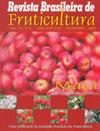Dris Norms For ‘Keitt’ Mango in Brazilian Semiarid: Diagnosis and Validation
IF 0.9
4区 农林科学
Q4 HORTICULTURE
引用次数: 0
Abstract
Abstract Nutritional standards based on long-term data improve the nutritional diagnosis of the crop, as they make norms more precise and establish more refined criteria. This study aimed to evaluate the nutritional status of the mango crop using the DRIS methodology to identify nutritional limitations and validate norms. A da-tabase of 202 commercial plots was used, whose leaves were collected in the floral induction period between 2011 and 2018 in the Brazilian semiarid region. The productivity of 'Keitt' mango under the Brazilian semiarid conditions was not related to NBI-DRIS. Nutrient concentration presents positive and significant relationship with the respective DRIS indices, enabling the determination of the balance point, establishing a nutritional standard and enabling the use of foliar diagnosis for the variety. The order of nutrients with the highest frequency of limitations due to lack, in decreasing order, was: Zn > Al > Na > Cu > S > B > Mn > P = K > Fe > Ca > N > Mg, and limitation due to excess, in decreasing order was: Fe > Na > Mg > Al > Cu > B = N > S > Ca > P = K > Zn > Mn.巴西半干旱地区“Keitt”芒果的Dris规范:诊断和验证
基于长期数据的营养标准提高了作物的营养诊断,因为它们使规范更加精确,并建立了更精细的标准。本研究旨在利用DRIS方法评估芒果作物的营养状况,以确定营养限制并验证规范。该研究使用了巴西半干旱区2011年至2018年花诱导期收集的202块商业地块的叶片数据库。巴西半干旱条件下“Keitt”芒果的产量与NBI-DRIS无关。养分浓度与各DRIS指标呈显著正相关关系,可以确定平衡点,建立营养标准,对品种进行叶面诊断。缺限频率最高的营养物质,由高到低依次为:Zn > Al > Na > Cu > S > B > Mn > P = K > Fe > Ca > N > Mg,由高到低依次为:Fe > Na > Mg > Al > Cu > B = N > S > Ca > P = K > Zn > Mn。
本文章由计算机程序翻译,如有差异,请以英文原文为准。
求助全文
约1分钟内获得全文
求助全文
来源期刊
CiteScore
1.50
自引率
20.00%
发文量
34
审稿时长
4-8 weeks
期刊介绍:
The Revista Brasileira de Fruticultura (RBF) publishes technical articles and scientific communications in the area of fruit crops, referring to results of original searches and unpublished papers in Portuguese, Spanish or English, and 1 or 2 reviews per edition, of invited authors.

 求助内容:
求助内容: 应助结果提醒方式:
应助结果提醒方式:


